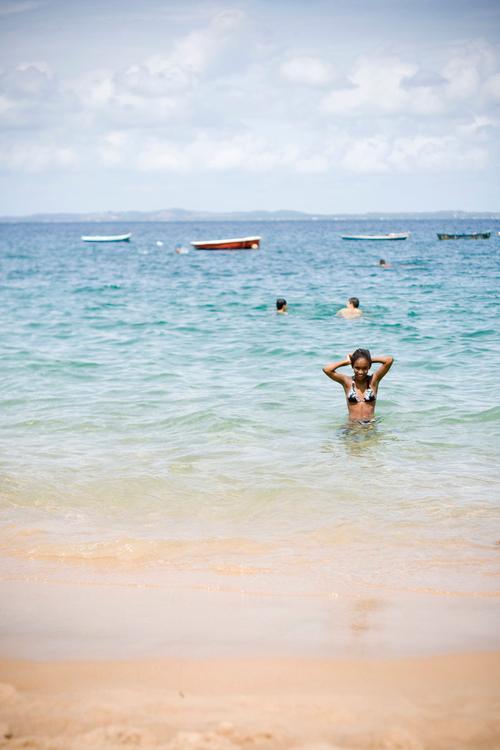Sailboats near Sao Marcelo Fort in Salvador de Bahia (Photo: iStock/Thinkstock)
Whether you’re coming for the soccer or scouting out a South American trip in the future, check back daily for Yahoo Travel’s quick guides to visiting all the World Cup host cities.

Ponte da Humaitá (Photo: iStock/Thinkstock)
Stadium: Arena Fonte Nova (a.k.a. Estadio Octavio Mangabeira), 52,048 capacity
Games: June 13 (Spain vs. Netherlands), June 16 (Germany vs. Portugal), June 20 (Switzerland vs. France), June 25 (Bosnia Herzegovina vs. Iran), July 1 (Final 16), July 5 (Quarterfinals)

Arena Fonte Nova (Photo: David Campbell/Wiki Commons)
Known For: Luminous African and Portuguese heritage, old town Pelourinho (a UNESCO World Heritage Site), and a two-level cityscape that spans a hill and a valley

Salvador’s World Heritage-designated old town, Pelourinho (Photo: Getty Images)
Lowdown: Thanks to being the birthplace of samba, Salvador (“Savior”) has a hard-to-beat nickname — Capital of Joy — and is a Carnaval destination that even Rio natives go to. Its history is less joyous, founded in 1549 as the capital of the Portuguese colony, it was the early center of the slave trade: About 1.5 to 2 million kidnapped Africans were brought here. Today, it’s the center of a vibrant Afro-Brazilian culture, as is the larger state of Bahia.
Best View: Elevador Lacerda, touted as the “world’s first urban lift,” connects Cidade Alta (Upper Town) and Cidade Baixa (Lower Town). From its top you can see the sun rise and set at the iconic Forte de Santo Antonio da Barra (Barra).

Sunset at the Elevador Lacerda (Photo: Mario Carvajal/Flickr)

Entrance to the Pousada Colonial in the historic center. (Photo: Pousada Colonial)
Sleep: Pestana Convento do Carmo charms as the country’s first historical luxury hotel, a lush five-star lodging converted from a convent that housed monks for four centuries. Five years of renovations thankfully still preserve the altar, original wood benches and doors, and artwork. The inexpensive Pousada Colonial (Pelourinho) lies within walking distance of the historical center’s attractions. Stay closer to the beach at the budget-priced Hotel Cocoon (Jaguaribe Beach)
Eat: Try acaraje, a deep-fried bean cake, or the moqueca seafood stew. If you can get to Rio Vermelho, find the bright yellow and red plastic chairs at the Boteco do Franca (Salvador – BA) for al fresco dining.

Acaraje stuffed with shrimp and spicy paste, a street-food speciality of Salvador (Photo: iStock/Thinkstock)

Berimbaus make great, colorful souvenirs. (Photo: elrentaplats/Flickr)
Buy: Berimbaus, a single-stringed percussion bow so integral with capoeira, or baianas (clothed dolls) for the kids.
Best Pickup Line: “Você pode me ajudar com o meu português?” (“Can you help me with my Portuguese?”)
How to Avoid a Fight: Learn capoeira, a martial art disguised as dance by the African slaves. The Forte Santo Antônio Além do Carmo is a good place to check out (Largo de Santo Antônio)
When Football Gets to Be Too Much: Take a two-hour boat trip or a 25-minute air taxi from the airport to Morro de São Paulo. The island has 25 miles of coastline, diving, surfing, and no cars. Closer by, you can take in a mud sea bath at the sparkling Praia Porto da Barra Beach.

Porto da Barra, Salvador, Bahia (Photo: Flickr/Liliane Callegari)
With contributions from Yahoo Brazil editors Cassiano Gobbet, Fernando Vives, and Tainah Fernandes.
Want more like this? Follow us on Facebook and Twitter and keep coming back every day for Yahoo Travel’s series on the #WorldCup, with guides to the host cities, advice on safety, and great tips and insider information you won’t find anywhere else. You can also check out all our World Cup coverage here.
